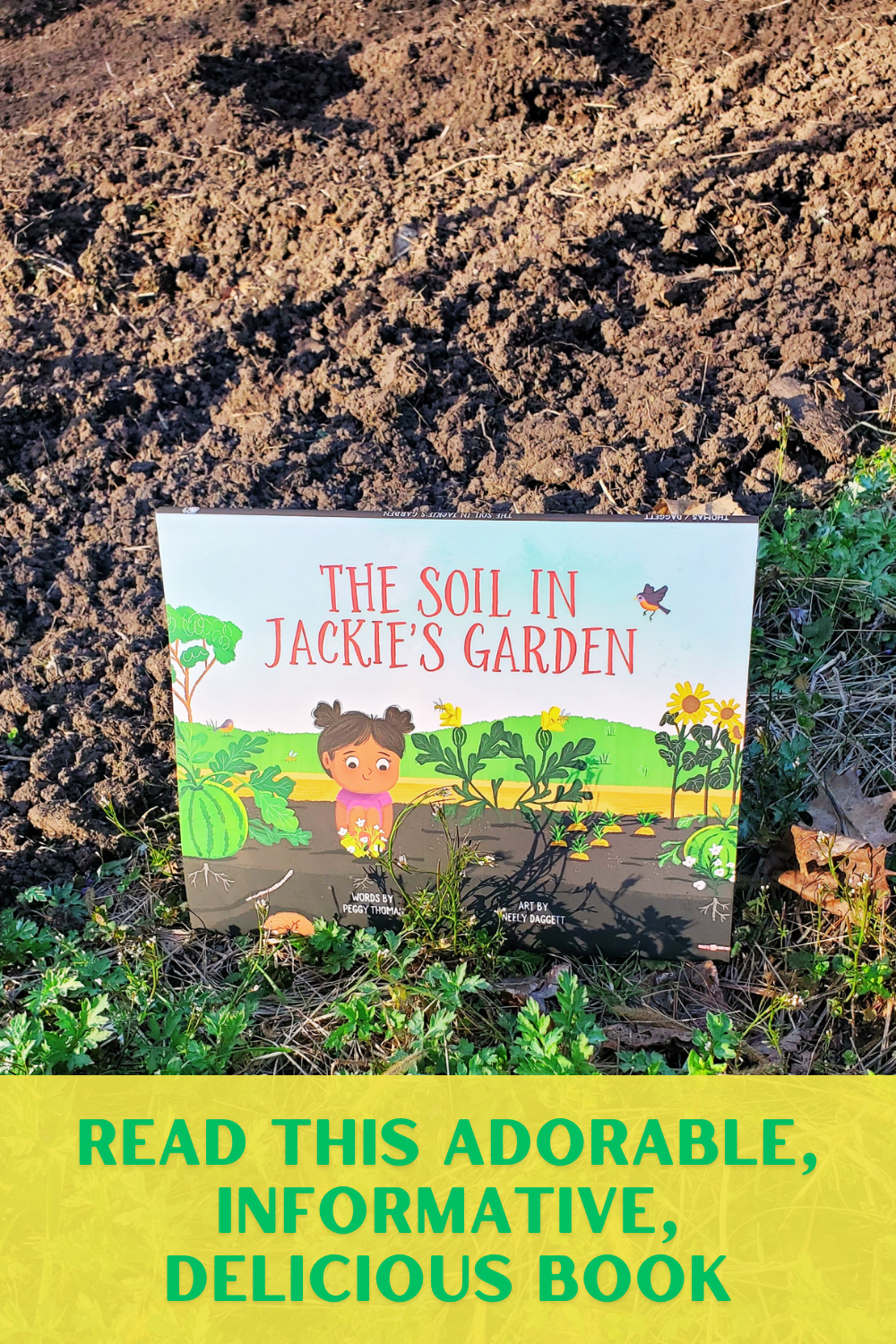Read This: Examining a Creative Life Well-Lived in Books By Hand
Have you ever known an artist that is so completely immersed in the creative life that they just glow with it…for a lifetime? Such is the case with an extraordinary artist, Gerard Brender à Brandis, whom we interviewed at his studio in Stratford, Ontario several years ago, and kept visiting whenever we were in town. (His studio is closed now, and only open by appointment.)
And, such is the case with an extraordinary writer, Marianne Brandis, whose work we’ve also read, loved, and shared (read our interviews with her on living a creative life and about a recent translation and editing project, This Faithful Book).
Marianne’s latest book, Books by Hand: Gerard Brender à Brandis, Wood Engraver and Bookwright, combines the best of both siblings: the beautiful, entrancing writing of Marianne, who pens a magnificent biography of the creative life of her artist brother, Gerard. There are also many of Gerard’s illustrations and photos scattered throughout; the book (as you shall read below, in our interview with Marianne), was a collaborative process.
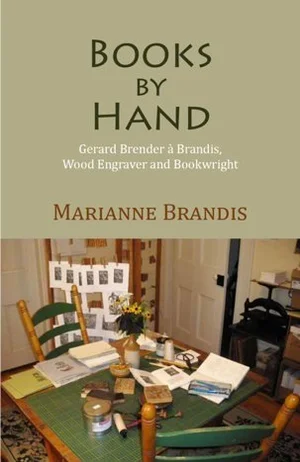
Let me tell you why I love this book so. Rarely do we meet an artist that has so lived the creative life, full to the brim, with all their heart. Gerard, from a young age, pursued a life of art, learning like a sponge, advancing the fields of wood engraving, bookmaking, and more, creating a small press, writing (and drawing and carving and spinning and weaving and printing) complete projects, and always, always exemplifying creativity. He collaborated with and taught many artists, and has changed the way I view art.
In Marianne’s engrossing biography, written with unique insight, we learn of Gerard’s formative years, ways of creating, paths to new and beautiful books, artistic communities, creating art, patience, and how even the seemingly smallest of things (perhaps a goldfish!) can inspire.
I delved in and didn’t put it down; pondered, googled, looked at books I already own from Gerard and Marianne, admired his art on my walls, told my family (all of whom are lifetime Stratford regulars, have been to Gerard’s studio, and have his art in their lives), and was in awe of this book.
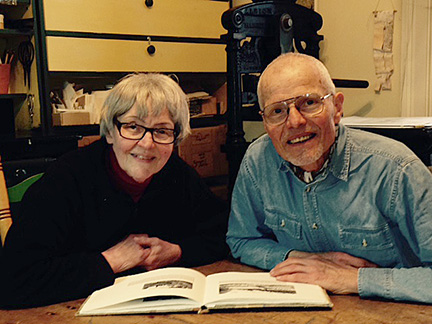
Marianne and Gerard. April 2015. Credit Doug Wilson
It’s a marvelous biography, crafted with care and showcasing the many groundbreaking aspects of Gerard’s artistic pursuits (especially when combined!). More than that, though, this book is an inspiration to live to your fullest creative capacities, to keep learning, creating, and questing. It’s also an outstanding collaboration of creativity, with these two siblings each shining in their own way, whether through art or words.
Highly, highly recommended.
We were lucky enough to chat with Marianne about the book, inspiration, writing about her brother, a life of art, how this book fits into her oeuvre, and more. Here’s what she had to say...
Please tell us about your new book, Books by Hand: Gerard Brender à Brandis, Wood Engraver and Bookwright...
Gerard Brender à Brandis is a Canadian artist who creates wood engravings and limited-edition handmade books. He is a master of all the arts and crafts involved in making a book by hand: besides drawing and engraving, he does (or has done) paper-making, typesetting, printing, making the covers by spinning and dyeing the flax and weaving it, and book-binding.
This—writing Books by Hand—is the second time that I've written about Gerard and his work. In 2009 the Porcupine's Quill in Erin, Ontario, in a periodical titled DA, a Journal of the Printing Arts, published an article titled "Artist at Work," in which I told the story up to that point. Gerard was, however, still in full career then, and by 2020, "Artist at Work" was out of date. Moreover, by then he was no longer opening his studio to the public—as he had done from 1991 to 2019—so the descriptions of how his studio operated and how the "open hours" shaped his life had to be put in the past tense. A full-length professional biography was needed, and Books by Hand is that biography. For the earlier stages of Gerard's career, I drew on information given in the article but revised and expanded it. I updated the appendices, especially a chronological list of all the books, both handmade and commercially published, in which his wood engravings appear. The whole of Books by Hand—and particularly the appendices—was designed to be a resource for librarians, archivists, and collectors, as well as a readable account of Gerard's life.
One important aspect of Books by Hand is the examination of how Gerard designed a career for which there were very few (if any) models. The book explores the influences that contributed to his vision of the creative work that he wanted to do, because a vision is necessary for making the choices that shape a career. Those choices also involved the lifestyle that he invented to provide a supportive and nourishing context for the career. His creativity expressed itself not only in the actual work but also in the lifestyle. I think that this would interest young artists, even if the careers that they’re shaping for themselves are not in the area of wood engraving and book-making.
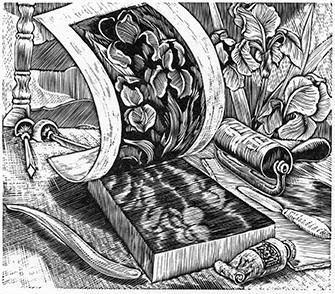
"Proofing the iris block," showing the process of printing from a wood-block
What inspired you to write this biography?
Well, for one thing, it’s an important story. Gerard achieved something very unusual in mastering all the elements and stages of making books by hand and then integrating them. Moreover, his work in all these fields has attained a high level of excellence—the books are works of art and are acknowledged as such by institutions, private collectors, and other experts.
There was another reason. During the years when his studio in Stratford, Ontario, was open to the public, many thousands of people visited it. They were fascinated by what was in many ways a glimpse into living history, because Gerard has recreated older ways of publishing books. They saw the 1865 Albion printing press that Gerard uses, and were shown the work in progress. They were amazed at the minutely detailed and very challenging process of engraving a block and were interested in the tools, the sketch books, and all the other accoutrements of the art and craft.
Now that the studio is no longer open (though Gerard continues to create engravings and books) it was necessary to make that story available in a more permanent form. In addition to Gerard’s website, where each stage of book-making is described—the text, written by Gerard himself, reproduces as closely as possible his face-to-face explanations to studio visitors—Books by Hand also tells the story.
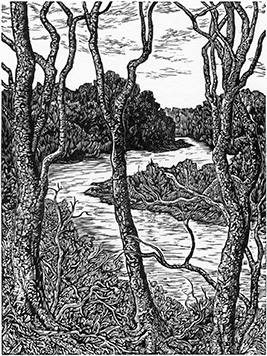
A shining ribbon of water, reprepresenting Gerard's work in landscape art
You've collaborated with your brother on many projects over the years; how was this one different, with him being the subject?
Because I’m Gerard’s sister—and, as you say, a frequent collaborator—I’ve been close to his career all along, and I was able to fill in any gaps by having extensive talks with him. We live just a few blocks from each other and talk every day. His first handmade book—Seasons Turning, in 1969—contains three poems of mine and twenty of his wood engravings. He illustrated four of my historical novels (commercially printed), and we worked together on a chapbook and several short books that he created by hand. The whole project about the Grand River in southern Ontario—resulting in a large handmade book and a smaller, commercially published one—was a detailed work of collaboration.
Books by Hand is different in that I am writing about Gerard. While I was working on the text, I was actually wearing three hats. As his sister, I was drawing on lifelong personal acquaintance and a deep understanding of where he was coming from; as his collaborator in more than a dozen projects, I was writing from a position that is very close to his work (I know more about it than anyone other than Gerard himself); and as an experienced biographer, I was approaching the story objectively, doing research and constructing a narrative that would be readable and interesting. I'm not an art expert, so for assessments of his work and his importance in the field, I contacted several people who are experts and are very familiar with his work.
As is usual with me, the text went through many drafts, two of which Gerard read and commented on. Together we carefully considered which engravings and other illustrations to use: the book includes nineteen of his engravings, which constitute a sampling of his work from the beginning (the very first engraving is there) to the present, and a number of photographs.
What might readers be surprised to learn, about Gerard's life of art?
Visitors to the studio were always surprised and impressed to learn just how intricate and time-consuming the processes of wood engraving and book-making are. Seeing Gerard at work, listening to his explanations, took people back into history, to a time before the photomechanical reproduction of illustrations and the mass production of books. They could see how book-making used to be done: the minutely detailed work of engraving (with very sharp steel burins on extremely hard and fine-grained boxwood), the letter-by-letter typesetting, the stitch-by-stitch sewing of loose sheets into a book.
At first, it might look as though Gerard recreated something that was once common. In fact, however, in the past no single professional craftsman would have done all the stages of book-making, except possibly for a few rare individuals. All the processes are deeply rooted in history, but what Gerard did in integrating them under one roof, in one pair of hands, is unusual.
How does this book fit into your career and oeuvre, Marianne?
Every book that I write poses new challenges and opens new doors. It gives me an opportunity to explore a new subject, or a new facet of a familiar one. This project involved thinking deeply about creativity. Creativity has intrigued me for a long time because, although the results are all around us, the process is elusive. Because I’m a creative person myself, thinking about it involved introspection and analysis, as well as consideration of another person’s creative work.
I have also, for many years, been doing life-writing—it’s an aspect of my interest in history and in the process by which something happens or comes into existence. It was absorbing to study in close detail how a career like Gerard’s evolved and to find a good way to tell a complex story.
Writing a biography raises important issues of privacy and publicity, of what to include and what to exclude, of how to shape the material into a satisfying structure. In the case of Books by Hand, I had to figure out how to deal with all of the 71 handmade books that Gerard has created so far, and to do it in a way that would result in something more than a mere catalogue. I looked for trends and for patterns and links among the books. For the career as a whole, I was constantly watching for shaping influences and for ways in which external factors led to changes of direction. (The flow of a life…such a fascinating thing to examine!) And then, because I didn’t want to make this a long book, everything had to be concise.
And, as usual, the end product had to look effortless.
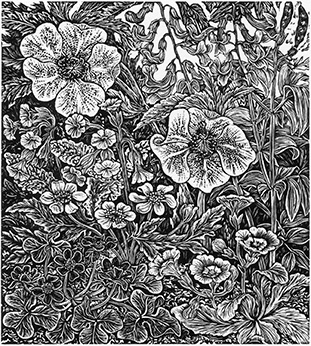
"Companions," a recent example of Gerard's botanical work
What's up next for you (and Gerard!)?
Gerard and I have another collaborative project in the works—another of his handmade, hard-bound books—but we’re not talking about it because it’s still in too fluid a state. We know from experience that talking about a book (except to each other) too early in the creative process can be damaging. And there is something beyond that dimly taking shape.
As for the writing that I do apart from Gerard—well, I’m 83 now and am not undertaking any more book-sized books, but my career is not over. I’m working on two biographical sketches of ancestors of ours, and also mulling over ideas for more short essays like those now on my website and that could eventually be published in chapbooks.
Where can readers find your work?
My website (www.mariannebrandis.ca) lists all my books and indicates where each one can be found, and there’s a contact form for anyone who would like further information.
Books by Hand is available from me using that contact form. The retail price is CAN$19.95 per copy, plus postage. I handle orders from Canada and the US, and I accept cheques (in Canadian or US funds) and e-transfers (from within Canada). For customers in the US who are ordering from me, the price for a single copy is US$30.00, which includes postage; in the case of orders of more than one copy, the customer would pay after receiving the invoice in the parcel.
The book can also be ordered from Fanfare Books, 92 Ontario St., Stratford, ON, Canada, telephone 519.273.1010, fanfare[at]cyg.net. Fanfare Books accepts e-transfers and credit cards and also takes orders from beyond Canada and the US.
Our websites:
All photos courtesy and copyright Gerard Brender à Brandis and Marianne Brandis, used with permission, except where noted.



















